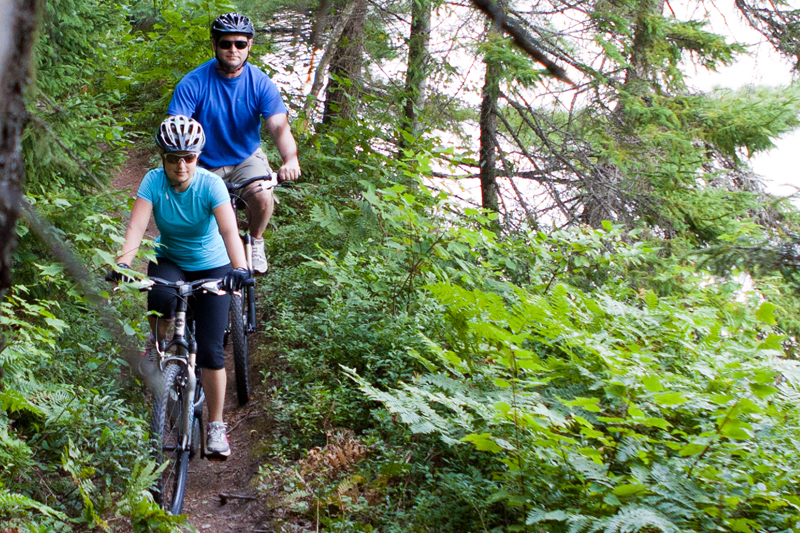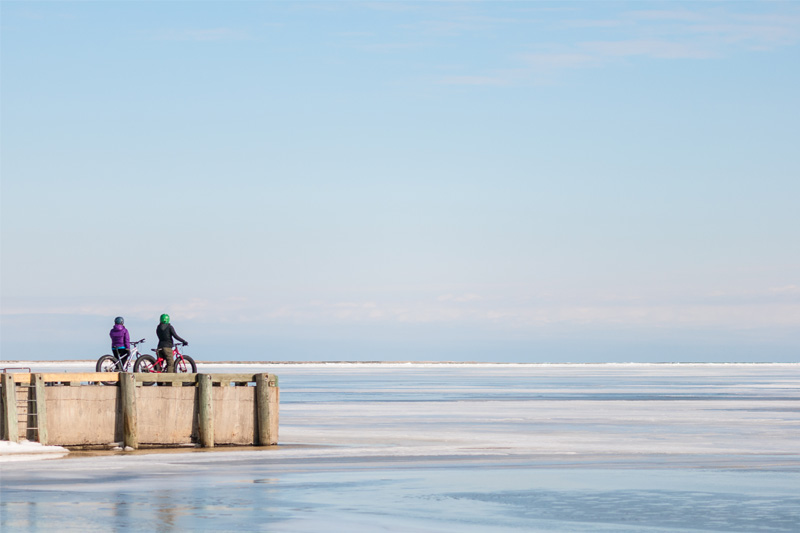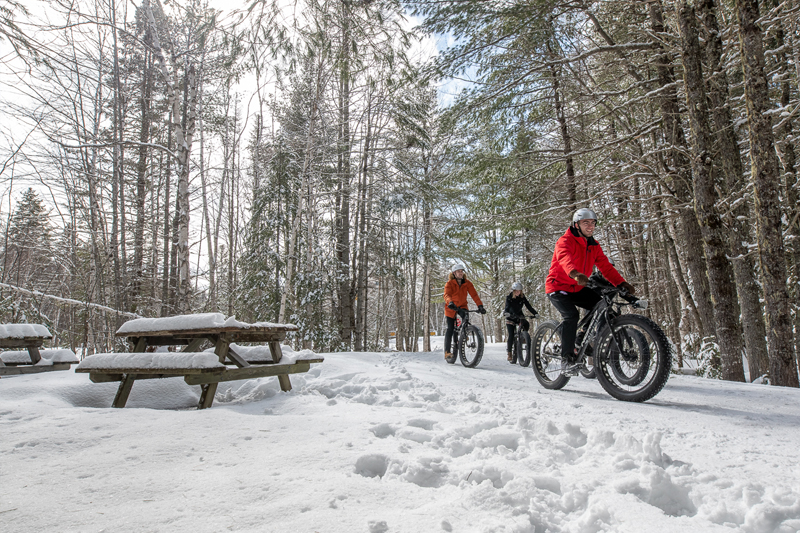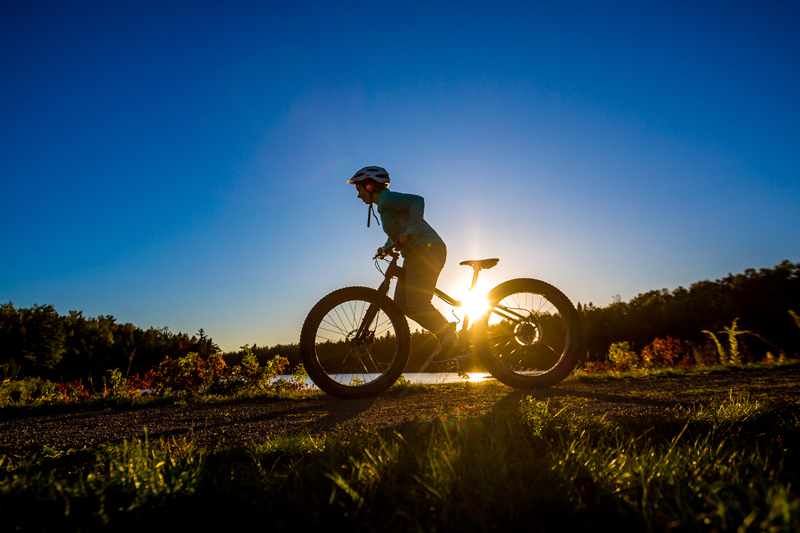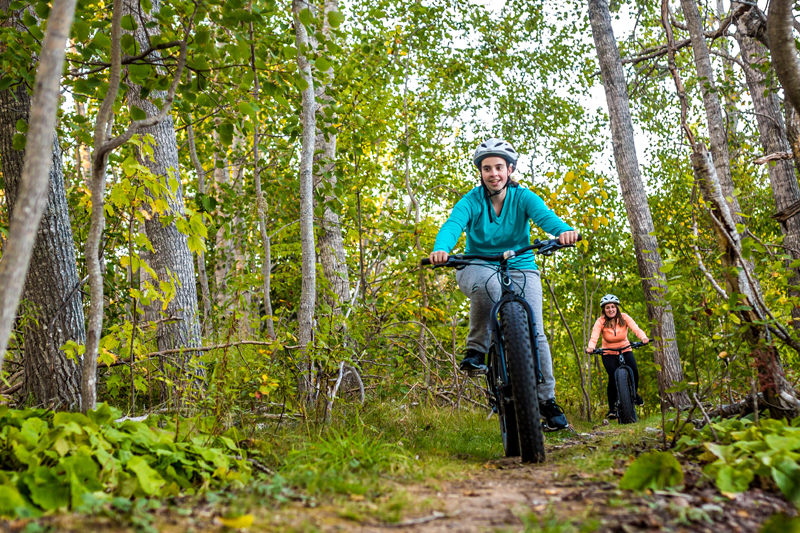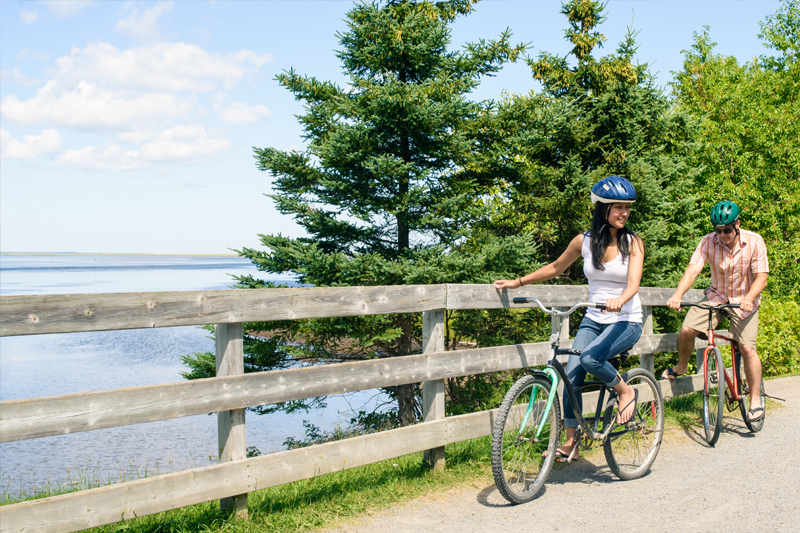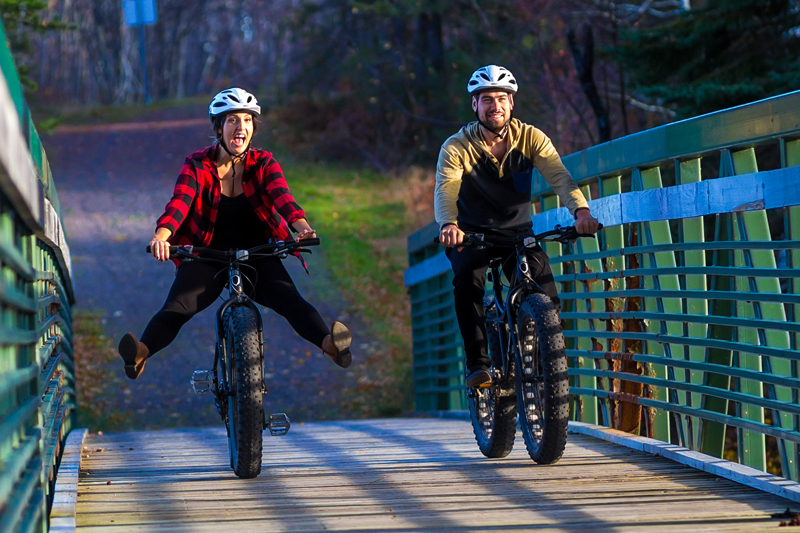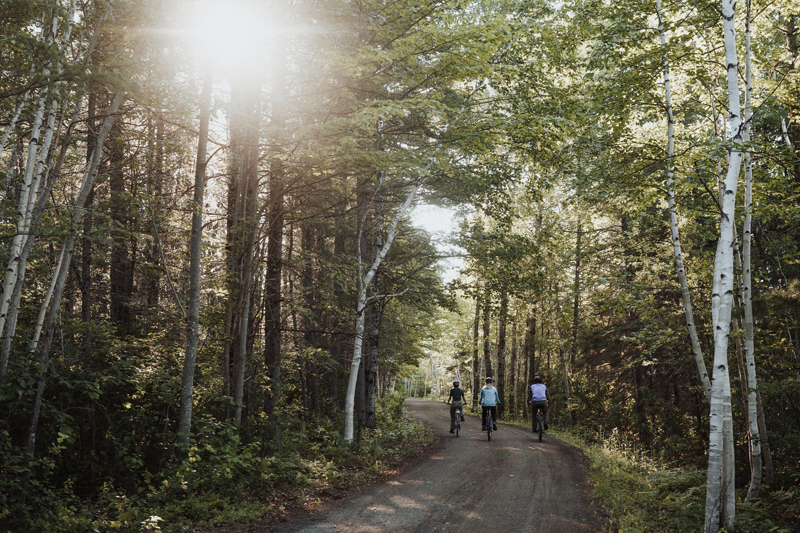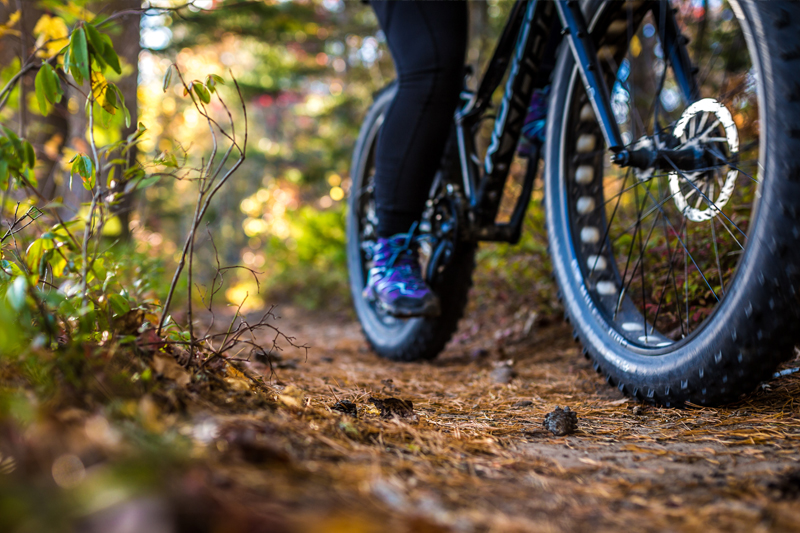
Cycling
Kouchibouguac National Park
Kouchibouguac’s 60 kilometres of bicycle paths are ideal for gentle exploration. Pedal along well-maintained gravel-topped trails that lead past striking fields of wildflowers, multifaceted peat bogs, saltwater lagoons and grand Acadian woodland.
Alongside the Kouchibouguac River, natural formations of Sandstone Garden invite Zen-like relaxation—and make sure to get a photo of the famous Leaning Pine. Later, search for the “bridge under the bridge”—a less-travelled route traversing the meandering Black River. Popular Major Kollock Trail leads mountain bikers past bogs, through woodland and atop sand on a varied-terrain adventure.
Numerous rest shelters dot the crisscrossing routes. Directional signs are plentiful. Equal parts active and relaxing, this is some of Atlantic Canada’s finest riding.
Fat bike
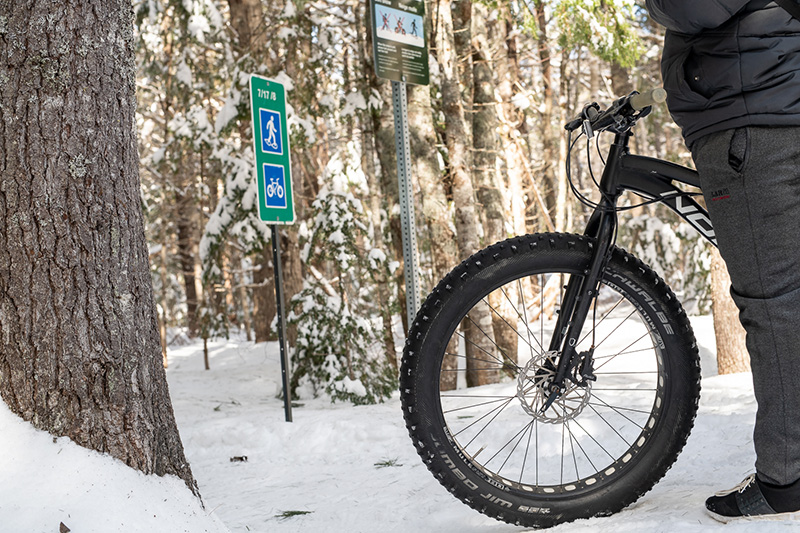
A fat bike is a bicycle with over-sized tires on wide rims. They are designed to ride on soft unstable terrain like snow and sand. They are a special type of bike that accommodate a much wider tire, often ranging from 3.5 to 5 inches in width.
The park grooms fat bike trails in the winter, making Kouchibouguac a year-round cycling destination.
Additional Notes
- Bikes are not permitted on the beach, dunes or coastal areas (beach, lagoons and rivers).
- Rest areas and pit toilets are located along the bike path in the central area of the park.
- Signage and location maps are scattered throughout the trail system.
- Fat bike users must stay on the bike trails.
- Yield for snowshoers and cross-country skiiers at intersections (they do not have brakes).
- Avoid blocking your rear tire (skid).
- If you are renting your fat bike at Kouchibouguac National Park, we recommend that you use a bike rack on your vehicle for safe transportation.
- Date modified :
